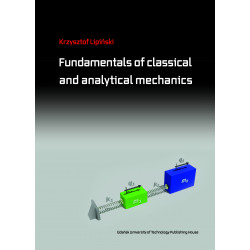



Słowa kluczowe / Key words: theory of vectors, kinematics of particles, dynamics of particles, spherical and general motion of rigid bodies, simplified theory of gyroscope, Lagrange proposed reformulation of mechanics
The primary intention of Author of the present book was to draw up a monographic picture of the contemporary attempts used to describe the Newtonian and Lagrangian Mechanics. But concurrently, the book can be recognized as a supplementary educational material, useful for the graduate courses in Mechanics taken by students majoring in Mechanical Engineering, Civil Engineering or Physical Science.
A short synopsis of the subsequent chapters follows: